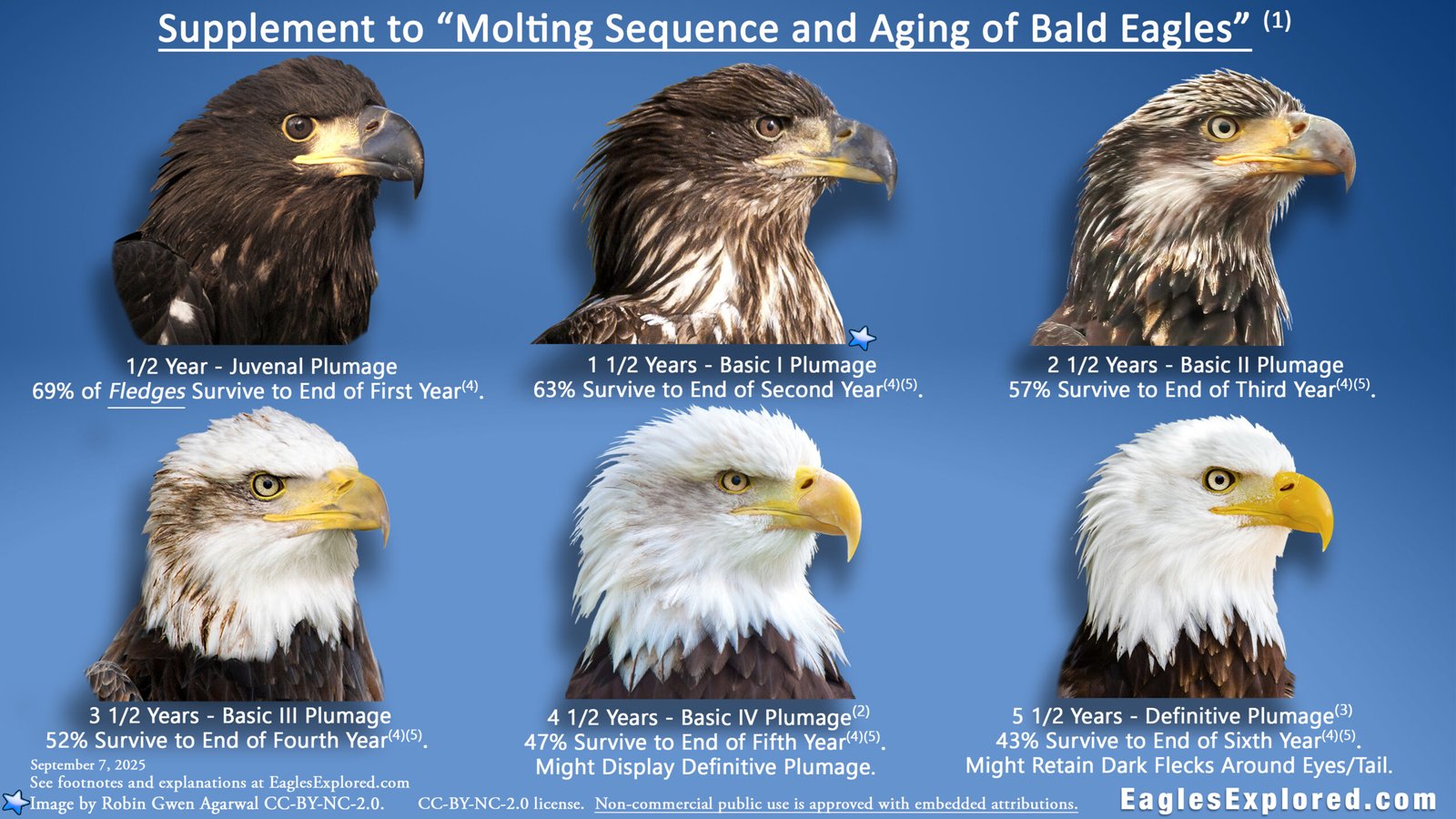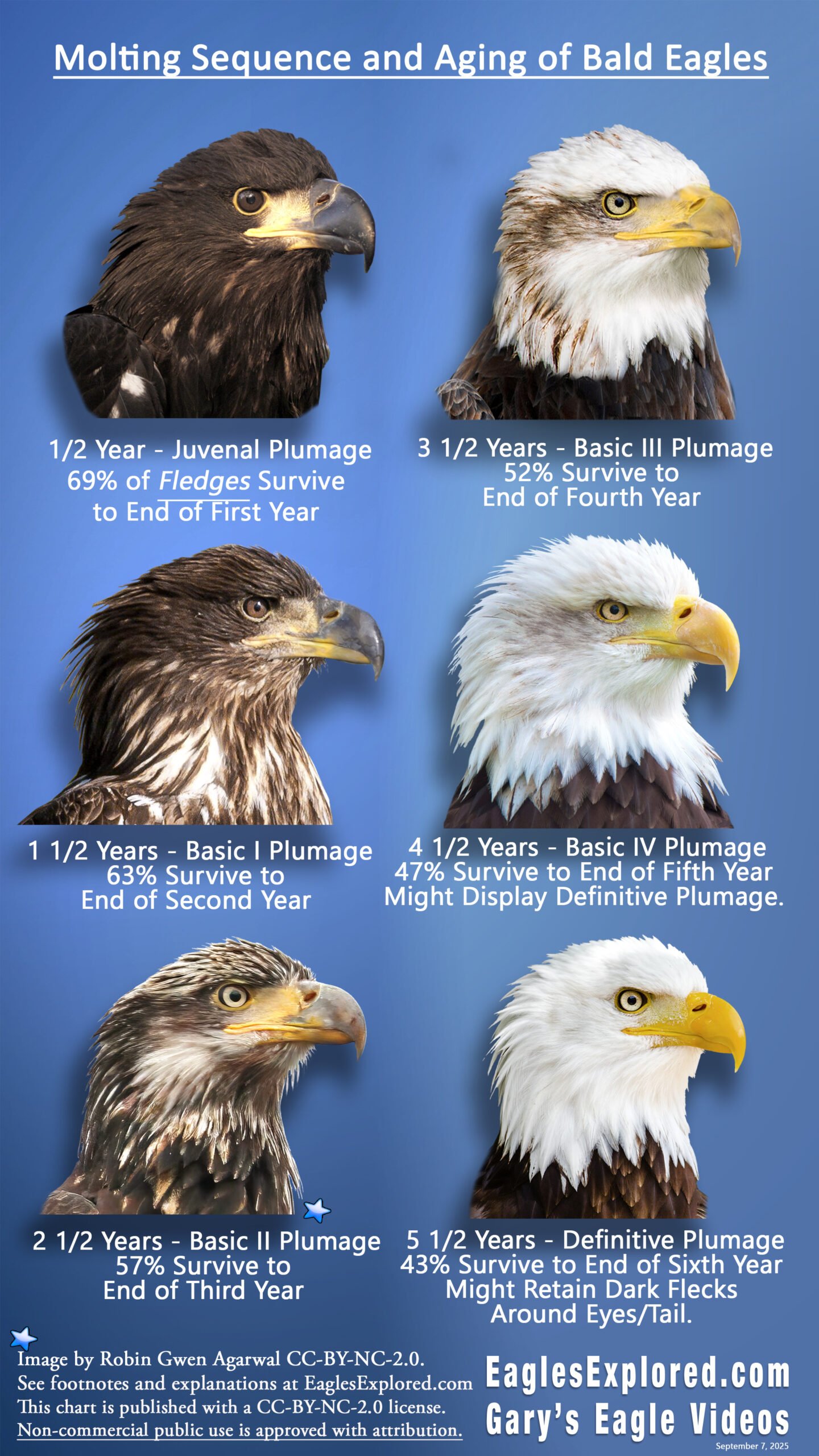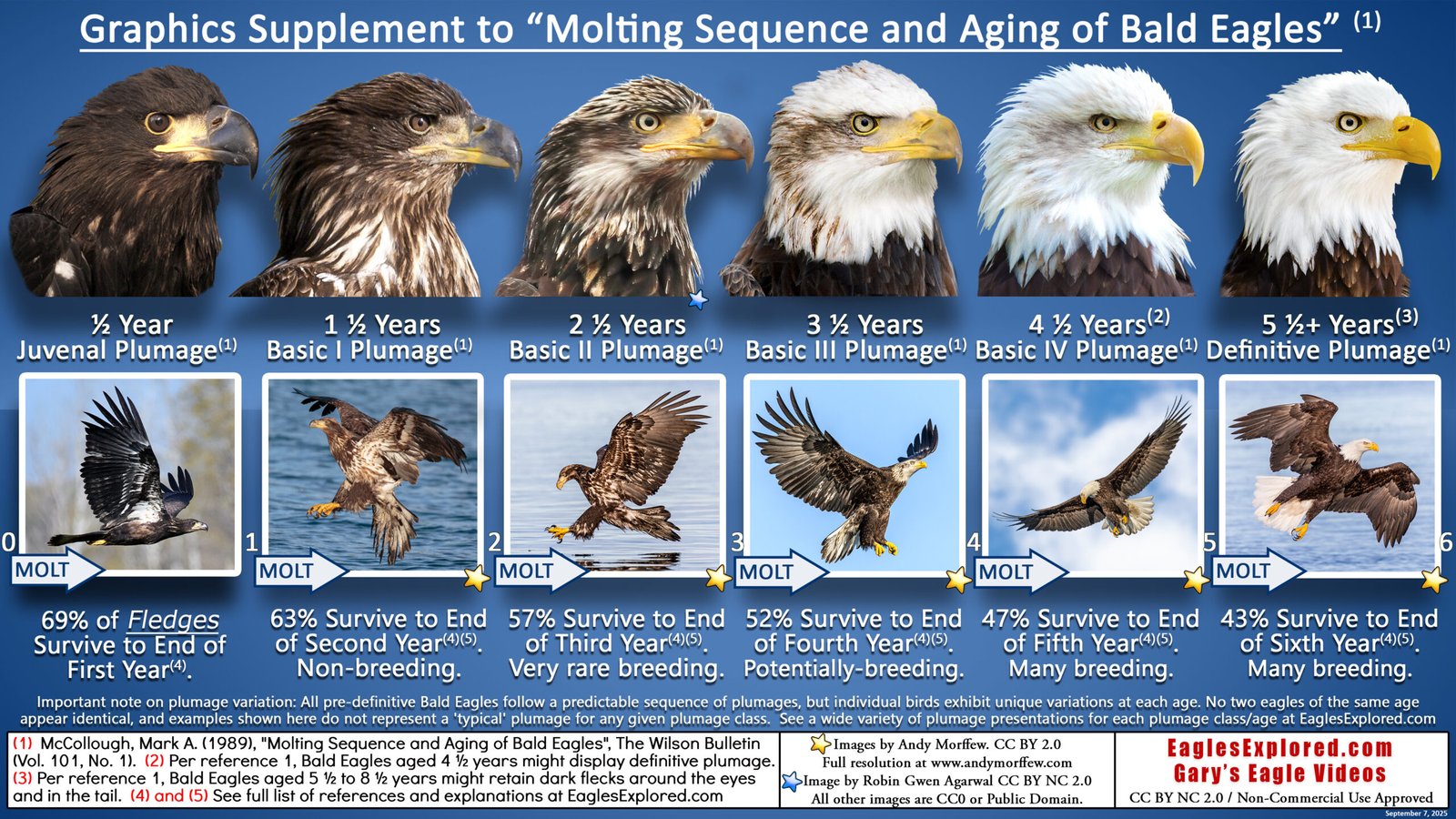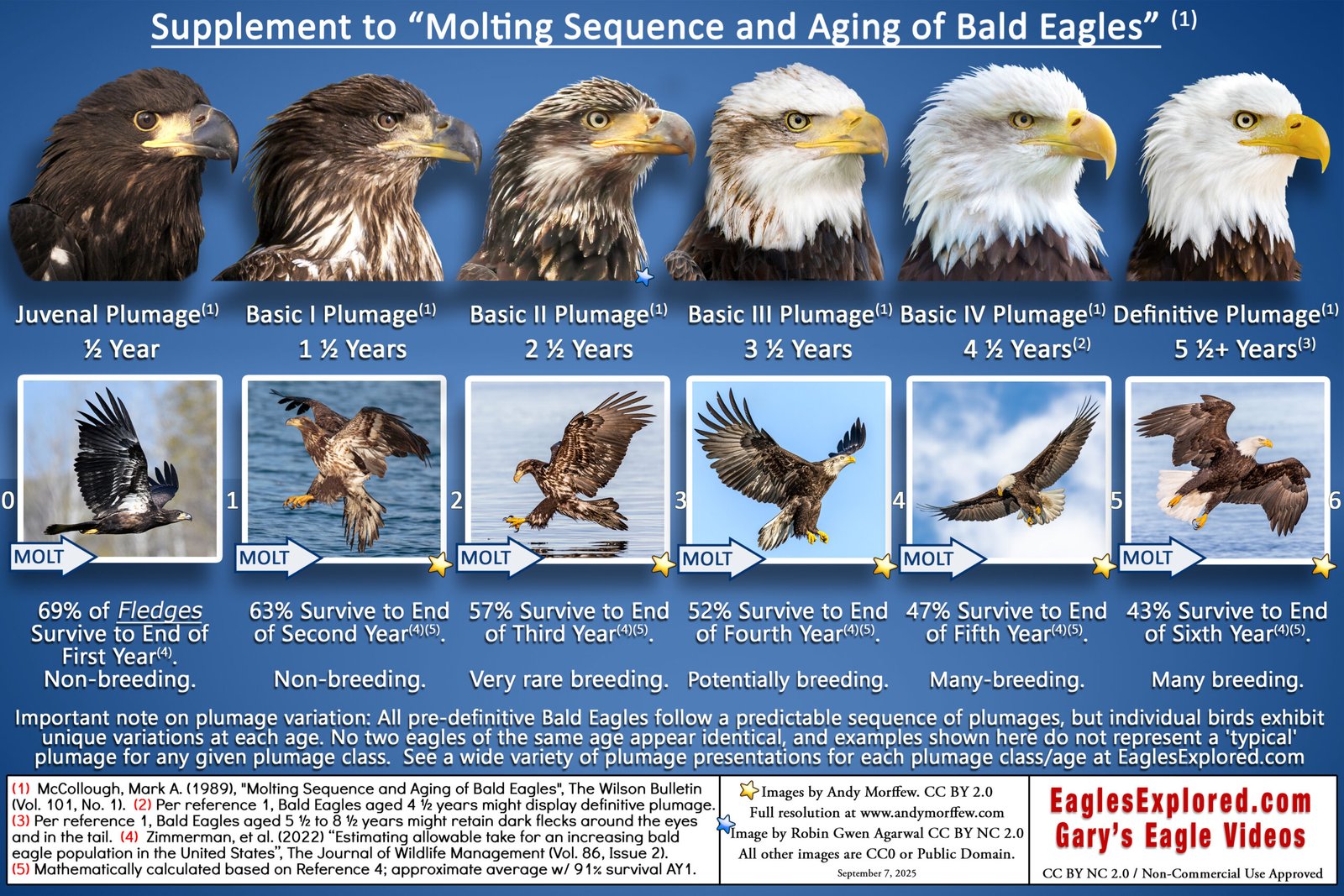
The Bald Eagle Molting Sequence and Aging Guide
EaglesExplored.com. This page presents four versions of the Bald Eagle Molt Sequence and Aging Guide. Each version offers a unique layout tailored to different devices, levels of detail, and user needs. The graphics appear first. Footnotes are provided at the bottom of the page. This page is designed to support your journey into eagle plumage and aging. The photo guides contain attribution to the authors, so you may use and share these just like they are!
This simplified guide summarizes the Bald Eagle’s molting sequence and aging process in a clean format optimized for modern screens. Tap the image to view, or choose your preferred download resolution above. Each version offers the same visual content, tailored for different needs.
We formatted this mobile-friendly version of the Bald Eagle Molting Sequence and Aging Guide for optimal viewing on phones and tablets. Tap the image to view, or choose your preferred download resolution above. Each version offers the same visual content, tailored for different needs.
This high-resolution 4K graphic presents a richly detailed summary of the Bald Eagle’s molting sequence and aging process. We optimized this format for wide-screen viewing on any device. It includes full-body eagle images for each plumage class. This comprehensive version is ideal for presentations, field guides, or immersive study. Tap the image to view, or choose your preferred download resolution above. Each version offers the same visual content, tailored for different needs.
This advanced version of the Bald Eagle Molting Sequence and Aging Guide offers the most detailed portrayal available on the site. It includes full-body eagle images for each plumage class—a novel feature that sets this graphic apart from traditional molt charts. This version incorporates all applicable footnotes and commentary. Tap the image to view, or choose your preferred download resolution above. Each version offers the same visual content, tailored for different needs.
Footnotes for the “Supplement to ‘Molting Sequence and Aging of Bald Eagles’ Guides” by Eagles Explored
(1) McCollough, Mark A. (1989), “Molting Sequence and Aging of Bald Eagles”, The Wilson Bulletin (Vol. 101, No. 1).
(2) Per reference 1, Bald Eagles aged 4 ½ years might display definitive plumage.
(3) Per reference 1, Bald Eagles aged 5 ½ to 8 ½ years might retain dark flecks around the eyes and in the tail.
(4) Zimmerman, G. S., LaRue, M. A., & Lonsdorf, E. V. (2021). Estimating allowable take of bald eagles in the United States using the Prescribed Take Level framework. Journal of Wildlife Management, 85(4), 731–742. Survival from Fledge to End of Year 1 (Y1) = 69%. Survival After Year 1 (AY1) = 91% for each additional year.
(5) Mathematically calculated based on Reference 4; approximate average w/ 91% survival AY1. Sample calculation. Survival Y1 Fledge = 0.69; Survival Y2 = 0.91; Survival Y3 = 0.91. The average probability that a fledge will survive to the end of Year 3 = 0.69 x 0.91 x 0.91 = 0.571 = 57.1 %
Important note on plumage variation. All pre-definitive Bald Eagles follow a predictable sequence of plumages, but individual birds exhibit unique variations at each age. No two eagles of the same age appear identical, and examples shown here do not represent a ‘typical’ plumage for any given plumage class. See a wide variety of plumage presentations for each plumage class/age at EaglesExplored.com
Additional notes about breeding. Based on current field observations and limited published data, bald eagle breeding onset can be loosely categorized as follows: first- and second-year birds are non-breeders; third-year birds are rare breeders; fourth-year birds are potentially breeding; and fifth- and sixth-year birds show many breeding cases, though not universally. While precise quantification remains elusive, this age-based framework is supported by patterns observed in Jenkins & Jackman (2006) and Route et al. (2022), which document relative breeding frequency and maturity thresholds across studied populations.




